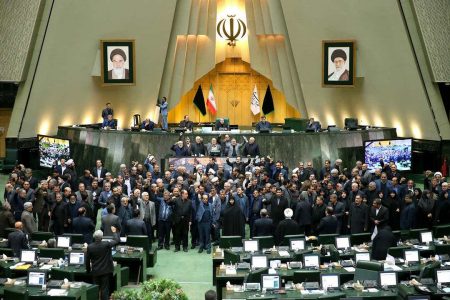
Iranian Regime may stand down but cyber and terror attacks are the real threat
President Donald Trump says Iran appears to be standing down after retaliating in a limited way to last week’s U.S. strike killing Iran’s top military commander, Qasem Soleimani. We will see whether that’s true, at least from an overt military perspective. But we should not relax our vigilance when it comes to other types of threats to Americans and U.S. regional security partners.
Iran’s capacity to conduct asymmetrical warfare, such as terrorist acts, targeted assassinations and cyberattacks, is far greater than its conventional military capabilities. That’s where Iran is most likely to focus any additional retaliation.
Making contingency plans and bolstering our defenses against this type of retaliation will require the concerted effort of the U.S. intelligence, law enforcement and homeland security communities, and not just a resort to military tools and troop deployments. The nature of this work also requires deft diplomacy and close cooperation with a wide range of allies and security partners in the region and across the globe in the hopes of deterring further escalation of the conflict.
The United States first designated Iran a state sponsor of terrorism in 1984. In the decades since, Iran has cultivated a network of terrorist organizations, proxies and criminal organizations stretching from Afghanistan to West Africa and including the Western Hemisphere. This gives Iran a wide range of options in responding to Soleimani’s death.
Nevertheless, Iran’s primary strategic focus has been in its neighborhood — and it intensified efforts to build networks after U.S.-led wars removed two of Iran’s chief rivals, the Taliban in Afghanistan and Saddam Hussein in Iraq.
One of Iran’s key partners is Hezbollah, a Lebanese Shiite terrorist organization founded with Iran’s support in 1982 during Israel’s invasion of Lebanon. Hezbollah has served as a force multiplier for Iran in Syria, Iraq and Yemen, as both military advisers to other Iranian proxy groups and as combatants in their own right.
U.S. officials have also linked Hezbollah to criminal enterprises like money laundering, human trafficking, drug smuggling and counterfeiting operations in the Western Hemisphere — including in the United States.
Hezbollah leader Hassan Nasrallah just threatened the United States, saying America will pay a price for killing Soleimani. Though Hezbollah has never directly attacked the U.S. homeland, there is some evidence of attempts to position sleeper cells and develop operational capabilities in America. In June 2017, for instance, an individual was arrested in New York and charged with casing John F. Kennedy International Airport for a possible Hezbollah attack.
Iran’s Quds Force, a special unit in the Islamic Revolutionary Guard Corps, has demonstrated its capability to use this network to carry out attacks both in the region and far from Iran, including in Europe, South America and South Asia. It even planned an attack against Saudi Arabia’s ambassador in Washington, D.C., in 2011. More recently, France accused Iran of plotting a major terrorist attack in 2018.
Beyond the asymmetric threats Iran poses through its terrorist network, Tehran also presents one of the most aggressive and innovative threats in the cyber realm. Iran will not seek to confront America directly and will look to take advantage of the asymmetric benefits that a cyberattack offers, so this threat will prove significant. The most likely targets will be closely associated with the U.S. government and possibly the U.S. financial sector, which Iran has previously attacked.
Source: USA Today





